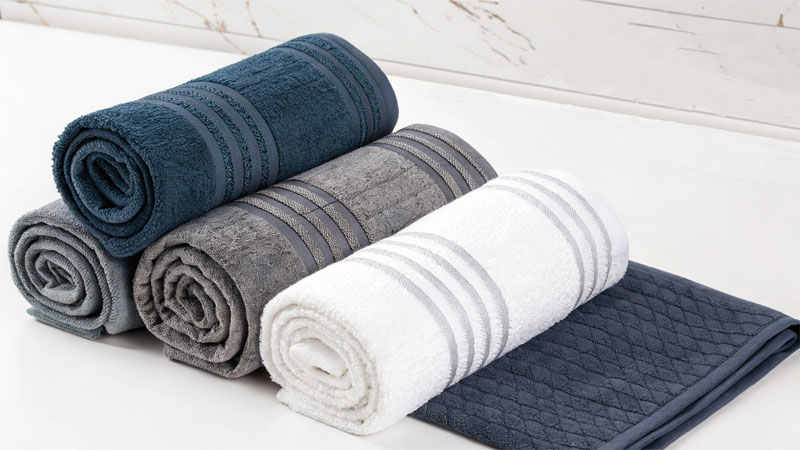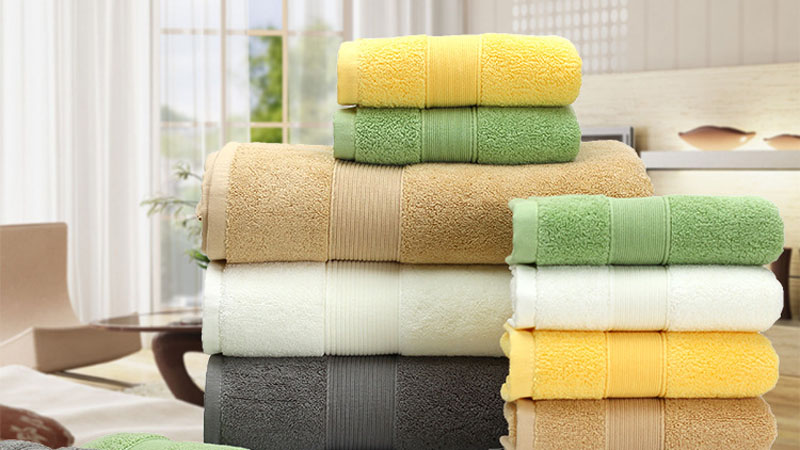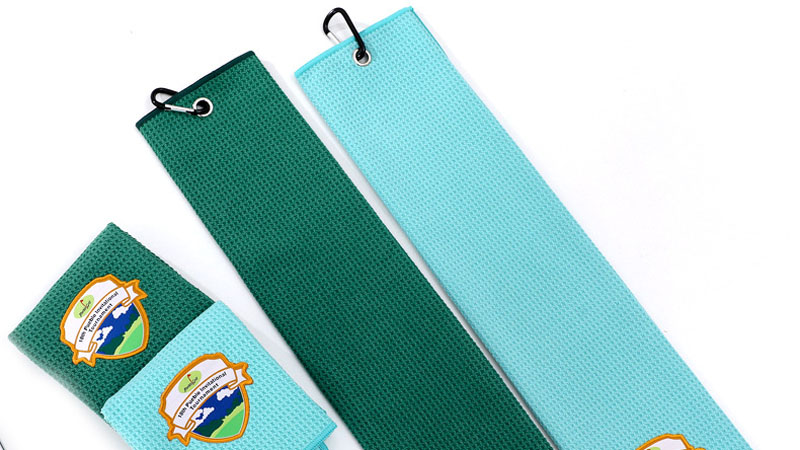If you want your beach towel lineup to stand out, missing next year's trends could leave you behind—are you ready for the upcoming wave of design innovation?
Emerging 2025 beach towel trends point to bold geometric patterns, sunset-inspired gradients, and eco-friendly materials. Brands should focus on these forecasted palettes and textures to stay competitive and resonate with sustainability-focused customers.
As someone who has watched seasonal changes transform the textile market for over 15 years, I believe that recognizing and adapting to these changes early is essential. When I first started, traditional stripes and anchor motifs dominated the catalog. Now, my clients crave something beyond that. Staying ahead means I need to spot the shift before it hits the mass market, source new materials, and retool production lines quickly. But what are the specifics of these shifts for 2025? Let’s break them down.

As someone who has watched seasonal changes transform the textile market for over 15 years, I believe that recognizing and adapting to these changes early is essential. When I first started, traditional stripes and anchor motifs dominated the catalog. Now, my clients crave something beyond that. Staying ahead means I need to spot the shift before it hits the mass market, source new materials, and retool production lines quickly. But what are the specifics of these shifts for 2025? Let’s break them down.
What Patterns Will Set the Standard for Beach Towels in 2025?
Shoppers have tired of repetitive designs and want something bold. If a towel blends in, your brand loses impact. Are you paying attention to pattern shifts?
The hottest patterns of 2025 will be geometric prints, organic florals, tie-dye effects, and digital-inspired graphics. Brands that experiment with asymmetry and layered motifs will appeal to younger, design-forward markets.
When I review trend forecasts from textile expos and analyze client requests, I see clear movement toward abstract, statement-making visuals. Geometric shapes—like interlocking hexagons or undulating stripes—are favored for their eye-catching modernity. Watercolor and tie-dye effects, rooted in nostalgia, create relaxing vibes. I also get more inquiries for digital art motifs and playful, oversized icons. Crucially, mixing several elements in one design draws the consumer’s eye on crowded retail shelves.

When I review trend forecasts from textile expos and analyze client requests, I see clear movement toward abstract, statement-making visuals. Geometric shapes—like interlocking hexagons or undulating stripes—are favored for their eye-catching modernity. Watercolor and tie-dye effects, rooted in nostalgia, create relaxing vibes. I also get more inquiries for digital art motifs and playful, oversized icons. Crucially, mixing several elements in one design draws the consumer’s eye on crowded retail shelves.
| Popular Pattern | Key Features | Why it Works |
|---|---|---|
| Geometric | Angular, repeating forms | Modern, visually sharp |
| Organic Floral | Large, free-form blooms | Soft, on-trend appeal |
| Tie-Dye | Washed, swirled color mixes | Relaxed, nostalgic |
| Digital Motifs | Pixel art, overlays | For Gen Z appeal |
If you want your towels to stand out, commission original artwork, experiment with asymmetric layouts, and poll your audience on preferred looks each season.
Which Colors Will Dominate Beach Towel Collections in 2025?
Sticking with last year’s color wheel can dull your brand image. Fresh beach towel colors keep customers excited, but which hues will lead?
2025’s trending colors include sunset oranges, ocean blues, lush greens, and warm earth tones, often used together in gradient fades. Accents of lavender and digital-inspired neons offer a youthful twist.
Growing up near the coast, I saw customers gravitate toward sea-inspired shades year after year. However, the new shift is not about primary ocean blue alone. It’s about color stories that blend sunrise pink into tangerine, or moss green swirling into navy. I see big brands using these gradients for a sense of movement. Pops of digital neon—think electric yellow or violet—are showing up for the “digital native” generation. At my workshop, I now regularly sample new dye techniques for richer saturation and colorfastness.

Growing up near the coast, I saw customers gravitate toward sea-inspired shades year after year. However, the new shift is not about primary ocean blue alone. It’s about color stories that blend sunrise pink into tangerine, or moss green swirling into navy. I see big brands using these gradients for a sense of movement. Pops of digital neon—think electric yellow or violet—are showing up for the “digital native” generation. At my workshop, I now regularly sample new dye techniques for richer saturation and colorfastness.
| Color Trend | Application | Why it Appeals |
|---|---|---|
| Sunset gradients | Towel body, borders | Dynamic, emotive |
| Sea blues/greens | Motifs, entire towel | Timeless, calming |
| Earth tones | Base layers | Natural, eco-focused |
| Neon accents | Logos, fringe, tags | Energetic, eye-catching |
Use short-run dye tests to gauge how gradients or neons work with your fabric base before moving into mass production. Ask your supplier about the latest colorfast pigments—they make a real difference in long term product quality.
What Materials and Finishes Will Satisfy Next Year’s Beachgoers?
Using basic terry cloth is safe but may signal you’re behind. Are your materials as innovative and sustainable as your designs?
The leading materials for 2025 will be recycled cotton, bamboo blends, and advanced microfiber. Brands should also explore sand-resistant weaves and enzyme-washed finishes for a softer, more sustainable product.
Clients now ask me for GOTS-certified organic cotton or GRS-certified recycled fabrics. Bamboo fibers get top marks for softness and antimicrobial properties. After extensive testing in my studio, I've learned that high-density microfiber dries faster and repels sand effectively, making towels more functional. There’s also momentum for “waffle” and “honeycomb” textures, which trap less sand. I always recommend enzyme wash finishing—it boosts softness without sacrificing absorbency. Eco-friendly choices are no longer optional for brands that want to compete globally.

Clients now ask me for GOTS-certified organic cotton or GRS-certified recycled fabrics. Bamboo fibers get top marks for softness and antimicrobial properties. After extensive testing in my studio, I've learned that high-density microfiber dries faster and repels sand effectively, making towels more functional. There’s also momentum for “waffle” and “honeycomb” textures, which trap less sand. I always recommend enzyme wash finishing—it boosts softness without sacrificing absorbency. Eco-friendly choices are no longer optional for brands that want to compete globally.
| Material | Key Benefit | Use Case |
|---|---|---|
| Recycled Cotton | Sustainability, softness | Eco lines, essentials |
| Bamboo Blends | Softness, quick-dry | Premium collections |
| Microfiber | Sand-resistant, light | Sport, travel towels |
| Special Weave | Anti-sand, texture | Outdoor/beach use |
| Enzyme finish | Softness, less shedding | Kids, sensitive skin |
Work with your manufacturer to verify all third-party certifications and test-weave new textures on small batches before a full launch.
Conclusion
Staying ahead in the beach towel market means tracking the ever-shifting intersection of pattern, color, and material innovation. I’ve seen firsthand that brands who act quickly to adopt new design directions not only meet changing consumer preferences, they also strengthen customer loyalty and outpace competitors. The design, color, and sustainability trends of 2025 give brands a real chance to stand out—if they move now.
Professional Insights from 15 Years in the Field
-
Fast-Prototyping New Patterns
My experience shows brands save money and achieve better designs when they sample small runs with varied new patterns instead of committing prematurely to large orders. Styles that pop on screen can look different on fabric, so real-world testing is vital. -
Validating Color Consistency
Inconsistent dye lots can cause major headaches. I recommend rigorously test-washing your color choices and requesting swatch sets before finalizing bulk orders. Work with suppliers who have reliable colorfastness records. -
Material Sourcing for Brand Identity
Sustainably sourced cotton or bamboo tells a story your customers value. Ask for certifications like GOTS or GRS, and don’t be afraid to request detailed documentation. This transparency not only aligns with eco-conscious trends but also bolsters your brand image. -
Quality Assurance Systems
As buyers like Emily know from private label sourcing, control over the production line is essential. Establish clear quality checkpoints for weave density, softness, color performance, and finishing. Detailed inspection protocols prevent costly returns or damage your reputation.
Frequently Asked Questions
What patterns are expected to sell best for beach towels in 2025?
Geometric, organic floral, and digital-inspired motifs are expected to lead sales, along with revived tie-dye effects and bold, layered designs.
Which colors work best for beach towels targeting younger consumers?
Blended gradients, such as sunset or ocean themes, and neon brights like electric yellow or digital lavender are popular with Gen Z and Millennial buyers.
How can I ensure my beach towels are eco-friendly?
Choose certified organic or recycled materials, use low-impact dyes, and select sand-resistant, quick-dry weaves. Always request certification proofs from your supplier.
What new material technologies should I look for?
Look for bamboo blends, advanced microfiber, enzyme-washed finishes, and sand-resistant or waffle weaves for maximum performance and comfort.
Can I test new patterns in small batches before a big order?
Yes, most manufacturers offer small-batch and prototyping services. This lets you perfect your patterns and color choices before committing to full production.
How do I keep colors consistent between production runs?
Ask your supplier for lab dips and swatch approval before mass production. Conduct repeated wash tests and partner with mills that have strict quality controls for dyeing.
.png)







-1024x337.png)